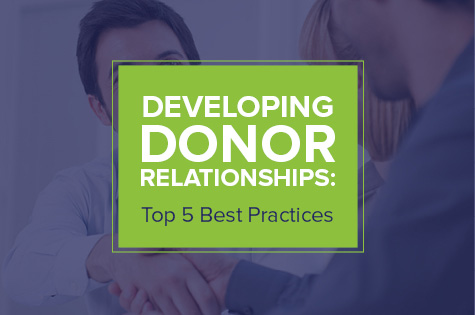The year 2020 has expedited many changes to the structure and function of volunteer programs. Our team here at VolunteerLocal has researched and organized industry insights over the last 6 months, with a specific focus on how volunteer programs are evolving with the times.
First, let’s examine the forces, big and small, that are motivating these changes. Although this is not an exhaustive list, the following represent many catalysts of change:
- COVID-19 (what you might call the “mega catalyst”)
- BLM protests
- Growing base of younger volunteers
- Technology
COVID-19
It comes as no surprise that COVID-19 has caused the most change to volunteer programs in the recent past (and present). The outbreak of the pandemic has brought volunteer programs to a complete halt in many cases, and forced other volunteer programs to scramble for a solution.
What might be more of a surprise, however, is how it has inspired quite positive, innovative change to volunteer programs.
For example, volunteer roles have diversified (even more on that in a moment!). Volunteer roles have become increasingly off-site, rather than on-site, as we realize that volunteering does not need to be confined to any particular set of four walls.
For example, more volunteers are being recruited for driving, delivery, and transportation roles — delivering supplies or even transporting volunteers safely (the keyword is “safely”) from one place to another.
Another “new normal” — forgive the buzzword — appears to be the idea of volunteering from home. Volunteer materials are mailed directly to volunteers’ homes, so they may complete their duties from the comfort (or quarantine) of their living room!
Mailing materials directly to volunteers invites a wider audience of volunteers to be engaged in the work they care about, as it makes your volunteer program more accessible to volunteers in various living situations and medical conditions. For example, volunteers who are unable to find transportation to your site, unable to volunteer during the hours you are open, or unable to work productively from your site for medical reasons — all of these folks can volunteer right from home.
Quick tip: Each community is different. Find out why people in your community choose not to volunteer. Then, see if your organization can meet that need/obstacle. There are many ways to go about collecting this information, but the easiest might be to ask your current volunteers for feedback along the lines of: “We are doing market research to better support our volunteers and our volunteer program. Reflecting on some of the people in your own social circle, could you share what obstacles/concerns they might have about volunteering?” Of course, speaking directly to those people would be best, but this should get the ball rolling!
COVID-19 is also helping us address needs and opportunities alike in our volunteer programs. To reflect on a few more: How did your organization first react to the crisis? Do you now have emergency protocols, or even a new position for crisis management? Have you identified the vulnerabilities within your program? Did you notice anyone who rose to the occasion unexpectedly?
BLM Protests
Although the Civil Rights and Black Lives Matter (BLM) movements were born long before 2020, BLM has rightfully received much more attention this year. The BLM movement has given us much to reflect on and improve upon as community organizers and coordinators.
For practical starters, these protests have demonstrated how to gather large groups of people, while still minimizing risk of COVID-19 spread and exposure. Protesters wear masks, sometimes gloves, and carry their own signs/materials without exchanging them with another person. The protests are held outdoors, where there is good air circulation. Importantly, the protesters are informed of the risks and are motivated to keep each other safe. Research has shown that these protests — unlike other gatherings we’ve witnessed over the recent months — have not contributed the the spread of COVID-19. (Source: National Bureau of Economic Research, 2020)
Furthermore, the movement itself has called attention to the systems within our own organizations, teams, and businesses. It has called for work that is overdue for many of us. Remember — tough questions can inspire needed, positive change. For example:
- Is our leadership and team representative of the community we’re serving? In what ways? How can we improve this?
- Are our goods, services, and job opportunities accessible to all, including those who have disabilities or socioeconomic barriers to access? If the answer is yes, yet you still do not see adequate representation in your programming or team, then there may be more subtle psychological or environmental factors preventing access. Reflect on how a person might feel upon arrival — welcomed, understood, intimidated, threatened, overwhelmed, at ease?
- How can we use our organization’s powers, assets, resources, and privileges to support the BLM movement?
Growing Base of Younger Volunteers
As you may have noticed over the years, Millennials and Gen Z have knack for identifying their core values and promptly getting involved to advocate for them. A lot of this translates directly to a increase in this these generations’ collective volunteer efforts and monetary donations. (Monetary donations are largely sourced from Millennials, as the Gen Z population is still working toward financial independence.)
Volunteer coordinators who have noticed this trend have been riding the wave, maximizing their appeal to younger generations, and as a result, watching their volunteer programs improve in a number of ways:
- Organizational adoption of technology solutions (more on this in the next section!)
- Opportunities with varying commitment levels
- Embracing & harnessing unique skill sets

As inspiring as younger volunteers are, they can also be known to be commitment-wary. Don’t write it off as a bad thing just yet! Introducing, the rise of “micro-volunteering”.
Micro-volunteering consists of small, bite-sized tasks, with no commitment to repeat. The tasks are usually informal, involving short, specific
actions that are quick to start and finish. Not only does micro-volunteering appeal greatly to younger generations, but it is also easy to promote and fulfill.
To make the abstract a bit more concrete, examples of micro-volunteering include: taking a feedback survey, leaving a review/testimonial, running an errand, signal-boosting and engaging with social media content, or being a brand ambassador.
Micro-volunteering could also involve small projects that utilize a volunteer’s unique skill. The age of the internet has empowered many to seek their own education in fields like graphic design, marketing, SEO, and computer science — whether via academic courses, online classes, or even YouTube videos. Younger generations are solution-seekers, powered by technology and personal values. They’d surely be a welcome addition to any volunteer program.
Technology
A more focused analysis of technology is a natural transition now, as it is closely linked to the understanding of Millennial and Gen Z volunteers. Beyond that, however, technology has fortified many volunteer programs with the organization, scheduling, and communication strategies necessary to keep things moving smoothly. (I say that not in hopes of selling to you; rather to celebrate the rise of game-changing tech solutions.)
From start to end, there is a technology solution for just about every need your organization might have. That is not to say that you should utilize every technology solution that is available…that quickly becomes overwhelming, expensive, and a total mess of open tabs in a web browser. Instead, I encourage you to envision technology as a library of resources, right at your fingertips.
Donations? Boom, that’s digital now. Recurring donations? Also a thing! Donor management software? You got it!
Rinse and repeat the above Q&A with the same level of enthusiasm, but swap out the topic with: volunteer management, vendor management, marketing/outreach management, etc. You’ll start to get the picture of technology’s impact in the nonprofit space.
“So broad, so abstract…” you might think, and you’re right! Let’s get more specific.
To be fair, technology solutions in the nonprofit space is a vast topic in its own right. Nevertheless, to measure how your organization and volunteer program has evolved with technology, you might ask yourself these questions:
- Have we ever hosted a virtual event? (2020 is the year to do it!)
- Have we offered any virtual volunteer positions?
- Do we facilitate remote volunteering?
- Can volunteers perform any volunteer-related tasks online, such as scheduling shifts, checking in/out, or logging hours?
- What methods of communication are we utilizing? Email? Text?
- Is volunteer information scattered among a series of folders and spreadsheets, or organized securely in a cloud-based database?
Technology can certainly be overwhelming, so set just one or two goals with your team. Work toward them together, one celebrated baby step at a time. If our team at VolunteerLocal can help, just say the word!
Reflecting on your own volunteer program, have you noticed any of the changes mentioned in this article? Continue to be mindful of your team’s reactions to these changes — including the reactions of your volunteers! Change can be nerve-wracking, and as a leader within your organization, you might explore ways of communicating change positively so that no one is left feeling discouraged.
2020 has been a year of incredible pressures to say the least, but sometimes pressure welcomes long-term change for the greater good. In your own reflections, or perhaps after reading this article, we hope you find a few glimmers of shine in an otherwise cloudy year.








